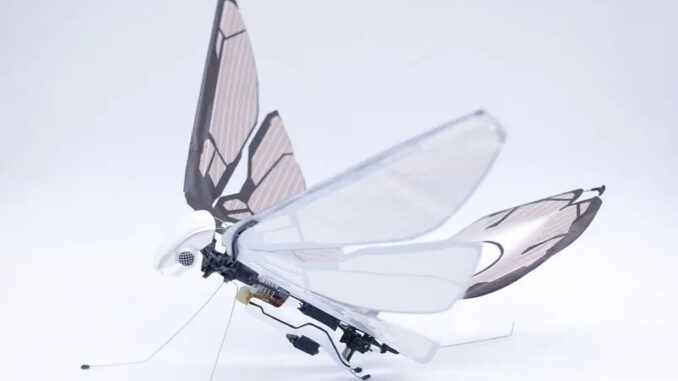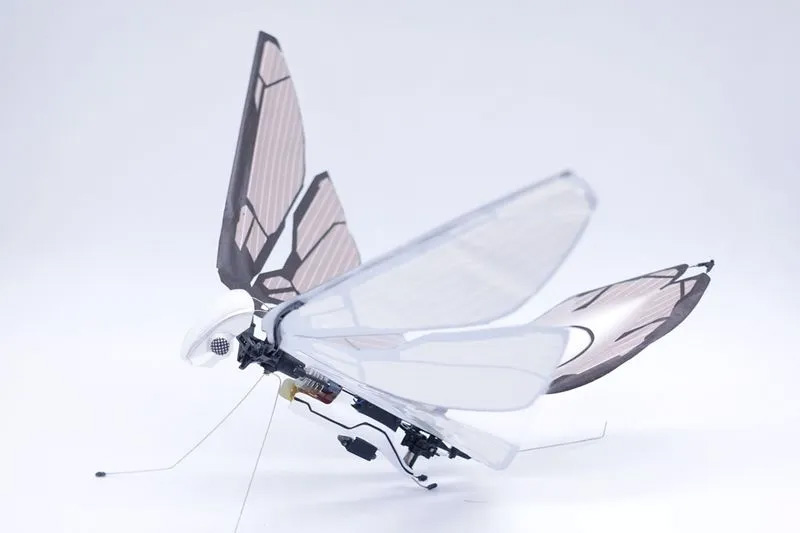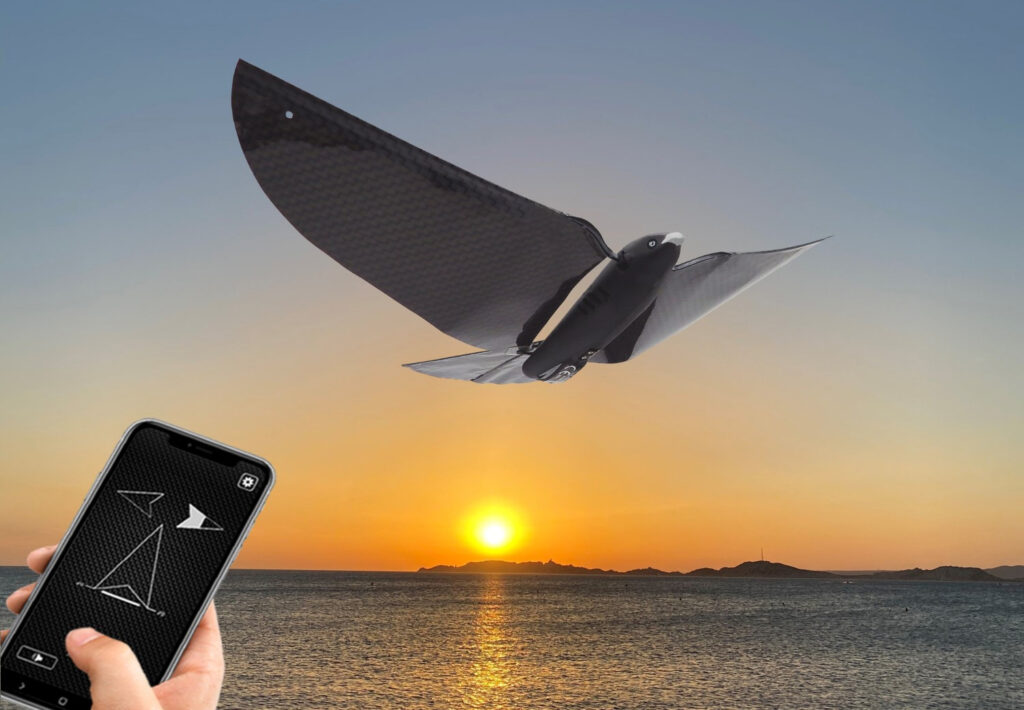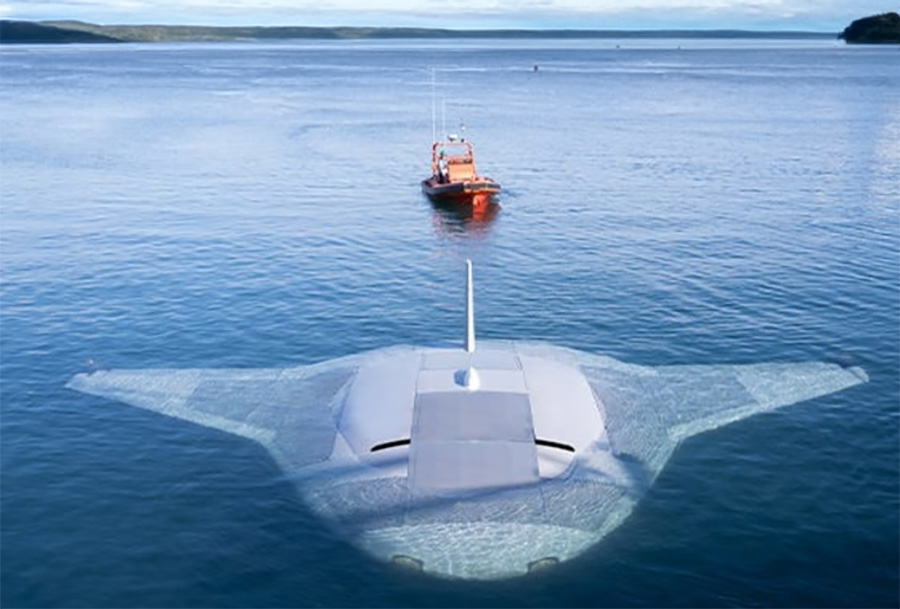
Technical analysis of biomimetic drones, their technology, military and civilian applications, and the implications of their development.
Biomimetic drones, or drones inspired by biology, are devices designed to imitate the shapes and behaviour of living organisms, such as birds or insects. Used primarily in military contexts for surveillance or attack missions, these drones offer a significant tactical advantage thanks to their stealth and ability to blend into the natural environment. This article explores the technology behind these drones, their applications, the technical challenges they pose, and the implications for the future of warfare and security.

What is a biomimetic drone? Definition and basic concept
A biomimetic drone is an unmanned aerial vehicle (UAV) designed to mimic the biological characteristics and behaviour of animals, mainly birds and insects. The term “biomimetic” comes from the integration of the words “bio”, which refers to life or living beings, and “mimetic”, which indicates imitation. These drones are designed to reproduce the flight, appearance and sometimes even the specific movements of natural organisms.
The main aim of these drones is to exploit the advantages of nature to create more efficient and discreet devices. For example, a drone that mimics a bird can fly in populated areas without attracting attention, while a drone inspired by an insect can access restricted spaces that are difficult for larger devices to access. These devices often use advanced technologies, such as flapping wings for flight or miniaturised sensors for surveillance.
The technologies behind biomimetic drones
Biomimetic drones are based on a combination of advanced technologies, including propulsion systems inspired by nature, lightweight and durable materials, and miniaturised sensors. One of the most notable technologies is the ornithopter, a device that allows a drone to fly by flapping its wings, mimicking the flight of birds.
These drones are often made from lightweight composite materials such as carbon fibre, which offers an excellent strength-to-weight ratio, essential for drones requiring great agility. Miniaturised electric motors generate enough power for stable flight while maintaining a low noise footprint, which is crucial for stealth.
Sensors used in these drones include high-resolution cameras, infrared sensors for night vision, and position sensors to maintain stability in flight. These sensors are often integrated into real-time data management systems, enabling the drone to transmit information directly to the operator, even at considerable distances.
A concrete example of this technology is the Black Hornet, a nano-drone developed by FLIR Systems. Weighing just 33 grams, it is capable of flying for around 25 minutes and can provide images in real time from a distance of several hundred metres. This type of drone is used for battlefield reconnaissance, providing an overview without compromising the position of forces.

Military applications of biomimetic drones
Biomimetic drones have found significant applications in the military field, due to their ability to operate discreetly and effectively in hostile environments. Their main use is surveillance and reconnaissance. By mimicking common animals, these drones can be easily integrated into the environment, reducing the likelihood of detection by enemy forces.
In addition to surveillance, some biomimetic drones are equipped with miniaturised explosive charges, making them capable of carrying out targeted attacks. By blending into the landscape, these kamikaze drones can approach their targets unnoticed, considerably increasing the effectiveness of strikes while minimising the risks to human operators.
A striking example of the military use of these drones is the development of bird-like drones by the Chinese army, in particular by the Jiaolong commando unit. These drones, ranging in size from a sparrow to a hawk, are used for discreet surveillance of sensitive areas and for reconnaissance in urban terrain, where detection is particularly difficult.
However, the use of these drones raises ethical questions, particularly with regard to the rules of engagement and the protection of civilians. Their ability to conceal themselves in the natural environment could make it more difficult to distinguish between military and civilian targets, increasing the risk of collateral damage.
Technical challenges and limitations of biomimetic UAVs
Although biomimetic UAVs offer many advantages, their development and deployment are not without challenges. One of the main challenges is the complexity of the design and manufacture. Reproducing the natural movements of a bird or insect requires sophisticated flight mechanisms and very precise control systems, which increases production costs.
Another challenge is the limited autonomy of these drones. Because of their small size and the need to keep their weight down, the on-board batteries have a limited capacity, which restricts flight time. For example, even advanced models such as the Black Hornet have a flight autonomy of less than 30 minutes. This constraint requires rigorous mission planning to ensure that drones can accomplish their objectives before needing to be recharged or replaced.
In addition, environmental conditions can affect the performance of these drones. Strong winds, rain or extreme temperatures can disrupt their flight and compromise their stability. As a result, their use is often limited to favourable weather conditions.
Finally, data security is another major problem. These drones collect and transmit sensitive information which, if intercepted, could compromise military operations. Protection against piracy and signal interception is therefore a priority, but it also adds another level of complexity to the development of these devices.

Consequences and future prospects
Biomimetic UAVs represent a major advance in UAV technology, with significant implications for the military, civil and commercial sectors. By mimicking nature, these UAVs offer a new dimension of stealth and effectiveness, which could transform the way surveillance and attack missions are conducted.
In the civilian sector, these drones could be used for applications such as wildlife surveillance, infrastructure inspection or even parcel delivery in hard-to-reach areas. Their ability to operate unobtrusively and access places inaccessible to traditional drones makes them valuable tools for a variety of industries.
However, their rapid development also raises ethical and legal issues. The ability of these drones to blend into the natural environment could pose challenges in terms of privacy and civil surveillance. Governments will need to introduce regulations to govern their use and avoid potential abuses.
Biomimetic drones, while still in development, have already demonstrated their potential to revolutionise many aspects of drone technology. As the technology progresses, it is likely that we will see increasing adoption of these drones across a variety of sectors, each exploiting their unique ability to mimic life to carry out complex missions.
War Wings Daily is an independant magazine.